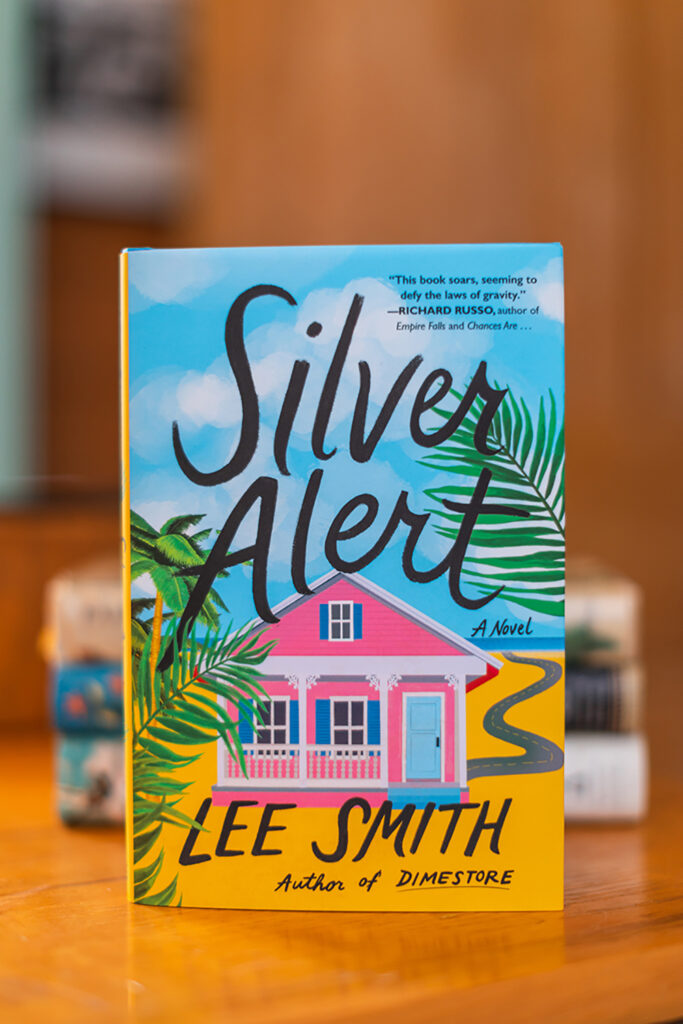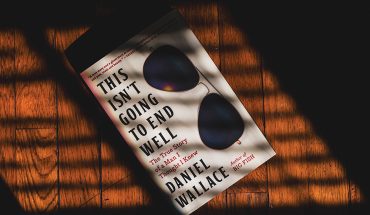The Southern author discusses her latest novel, Silver Alert. The 15th book from Smith, it leaves readers with memorable characters.
by Wiley Cash | photography by Mallory Cash
Silver Alert is Lee Smith’s 15th novel, and, if you believe her, it’ll probably be her last. How can this be true? How can the writer who gave us Ivy Rowe of Fair and Tender Ladies and the Cantrell family from Oral History be done with crafting memorable characters with expansive histories?
If it is indeed Smith’s last novel, then at least readers will be left with several new characters to remember. There’s Dee Dee, a buoyant, young aesthetician under an assumed name who’s in Key West to hide from a past she can’t shake. There’s her client Susan, a wealthy woman who seems too young to be locked in
the throes of dementia.
And then there’s Susan’s husband Herb, a tough old guy from up north who, with his swollen prostate and weak bladder, can’t help but long for the days of his youth. Silver Alert is everything readers want from good storytelling and sharply drawn characters; the book is alternately hilarious and heartbreaking, wise and lighthearted, sly and deeply profound.
It’s the kind of novel that only Smith could write, and it will remind readers to be thankful that she has given us so many.
The idea behind Silver Alert came to Smith a little differently than the ideas that spawned her previous novels. Several years ago, when she and her husband, writer Hal Crowther, were driving back from a winter vacation in Key West, they began spotting signs on U.S. Highway 1, alerting readers with the words “silver alert,” complete with the make and model of a vehicle.
Neither Smith nor Crowther had ever heard of a silver alert, but they’d seen amber alerts that are issued when a youth goes missing, and they soon pieced it all together. They pieced together a story, too.
“We decided that it was an elderly guy who found a set of car keys in an old golf shoe, and he’d taken off in his car with the mani-pedi girl from the assisted living place,” says Smith.
She and Crowther had a few laughs on their drive home, speculating about where the man would stop on a trip that might end up being his final burst of freedom.
“There’s never been a more natural plot,” says Smith. “That’s the number-one plot in literature: ‘Somebody takes a trip.’ And number two is ‘a stranger came to town.”
Her character Dee Dee is from the mountains of North Carolina, and her cheerful beauty belies the dark secrets of a life of poverty that has been suffered in the shadows of sex trafficking.
Dee Dee seems to be the only person who can settle Susan during her bouts of confusion, a continuous struggle that has overwhelmed Herb, whose existential angst is fueled by grieving for his wife and the sense that their life together is over.
“Bless her soul,” Herb thinks on the novel’s opening page, “and damn it all to hell.”
Herb’s sarcasm and cynical nature, especially after his and Susan’s kids stage an intervention and force the couple into selling their home to move into an assisted living facility, could have easily soured the reader’s soul — at one point the narrator even says that Herb “hates everybody that’s young, everybody that’s having fun” — but Smith doesn’t allow that to happen because soon even Herb is buoyed by Dee Dee’s infectious optimism, and it’s that optimism that inspires Herb to abscond with his yellow Porsche, Dee Dee riding shotgun.
I ask Smith how she so convincingly wrote a character like Dee Dee, someone who maintains her spirit in spite of the trauma and struggle in her past.
“Well, I think in part that is a form of self-defense,” she says. “It’s a way of putting a little shell around yourself.”
In the novel, Dee Dee has spent time at the fictional Rainbow Farm in northern Florida, which is a home for women who are hoping to escape life on the streets. It’s the kind of place that Smith knows pretty well after working with organizations like Thistle Farms outside of Nashville, Tennessee.
According to the organization’s mission, it’s a “nonprofit social enterprise dedicated to helping women survivors recover and heal from prostitution, trafficking, and addiction” by offering a place to live and the opportunity to learn a professional skill.
While at Rainbow Farm, Dee Dee learned to be an aesthetician, something that felt natural to Smith, who admits, “I love the beauty shop type of stuff.”
Dee Dee’s work and her relationships with new friends like Susan and Herb lead her to believe that the terrible fates of life are far behind her and getting farther away every day, even if they do still exist somewhere in her past.
Throughout the novel, Smith brings the reader’s attention to this time continuum, including one moment when Dee Dee is watching moonlight move across a deck, thinking, “I am happy I’m so happy I willremember this for the rest of my life.” The book’s narrator steps in at that moment to add, “and she would, too.”
If Dee Dee is living in the moment while thinking about the future, Herb is living in the past while dreading what’s ahead. While he attempts to care for Susan, he continually “feels himself slipping back, back, back through time” to his first love, a woman named Roxana who he met when they were children in Buffalo, New York.
Given Susan and Herb’s predicament of being forced into assisted living, it would be easy to read Silver Alert as a kind of elegy to aging, but I read it as the opposite. I read it as a celebration of life along the time continuum. It’s about the past, present and future existing in the space of our minds regard less of what our bodies are doing.
“I find incredible solace in that,” I tell Smith.
“Yes,” she says. “Here I am, almost 80 years old, and I think this might very well be the last novel I write. But I still have everything existing in me, all these ideas and memories are still there. You can do that with a novel.”
She continues, “Things are sort of coming to me now in smaller scenes and short stories, smaller things like beads on a string, and you can see that in this book.”
If you were to look back over the novels that Smith has published, beginning with her debut The Last Day the Dogbushes Bloomed in 1968, you could see the beads on a string, the long continuum that has taken her from her hometown of Grundy in the Virginia mountains down to Hillsborough, North Carolina, and various parts of the state where she’s lived and worked.
“In your early work, it seems that you were investigating and chronicling the place that you came from in southwest Virginia,” I say. “And then in your more recent work, maybe beginning with Guests on Earth and Silver Alert, it feels like you’re investigating your place in the larger world after leaving the mountains of your youth.”
“I think that’s true,” Smith says.
“As you’ve spent more time writing about life outside of the place you call home, do you feel your work is somehow getting more personal?” I ask.
“In a funny way, yes, I think so,” she says. “I write my fiction very much from real life. And so, when I had those closer ties to the mountains, that’s what I wrote about. And some of the other places I’ve lived since then that have interested me.”
Beads on a string. The long continuum. Grundy, Hillsborough, Key West and the incredible characters and stories born from these places. It’s all there in Lee Smith’s novels, and regardless of whether or not she ever writes another one, it always will be.

This article originally appeared in the May 2023 issue of WALTER magazine.





